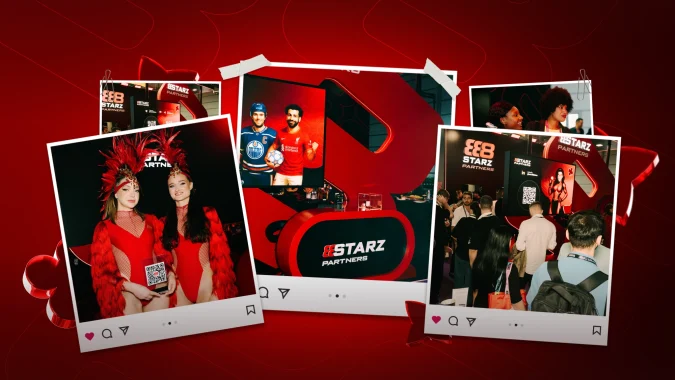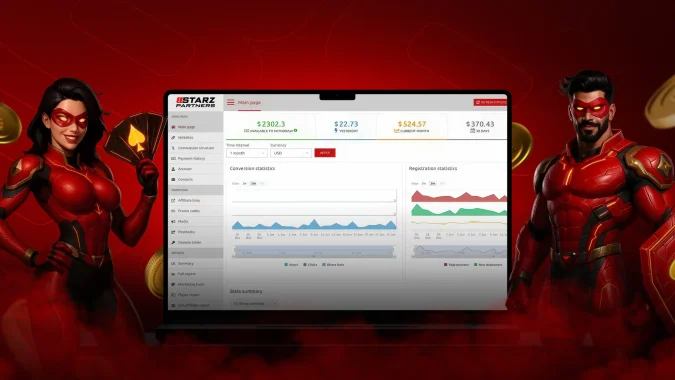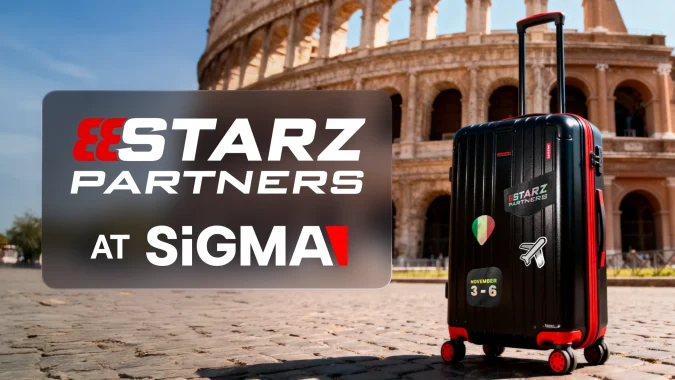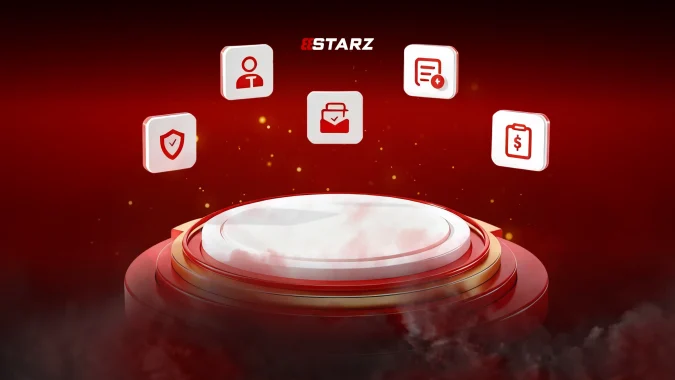How to Survive Adblock in 2025: Tips for Gambling Affiliates

- Understanding adblock and its mechanics
- Why adblockers threaten gambling affiliates
- Effective ad formats that bypass AdBlock
- Native Advertising & sponsored content
- Direct Click Ads & Push notifications
- Technical Solutions & Workarounds
- Anti-Adblock tools
- Bridge pages and pre-landers
- Native ad networks
- UX-focused strategies to reduce blocking
- Conclusion
- FAQ
Imagine you’re a website owner. Your analytics show a surge in traffic, but your ad revenue is flat. That gap between your visitor count and ad impressions is where ad blockers quietly eat your profits. It’s a marketer’s nightmare.
In this guide, the 888STARZ Partners team will clearly outline the best strategies for both groups, explain how adblockers work, which ad formats can bypass them, and what the future holds in the ongoing effort to bypass adblockers.
Understanding adblock and its mechanics
An adblock tool is software designed to detect and block unwanted online content automatically. It can exist in several forms, such as a browser extension, a system-wide application, or a setting at the router/DNS level. Its primary function is to block not only advertisements but also trackers and scripts on webpages, in apps, and sometimes across an entire network.
Most adblockers function as filters. When you load a webpage, your browser sends numerous requests to various servers to get all the page components—text, images, videos, fonts, ad banners, etc. An installed adblocker intercepts every outgoing request and incoming response, checking the resource’s URL against constantly updated filter lists. These lists contain hundreds of thousands of addresses of known ad elements. If a URL matches an entry or a specific pattern, the adblocker prevents the browser from making the request.
For ads embedded directly into the page’s content, adblockers use additional methods like DOM analysis and applying CSS rules to hide unwanted blocks. Some advanced adblockers can block requests by analyzing their behavior or size, even if their URL isn’t on a list.
System-wide adblockers, like AdGuard for desktop, work similarly but intercept traffic from all devices on the network, not just the browser. DNS-level blocking is simpler – it just prevents the domain names of known ad servers from resolving to IP addresses, making them inaccessible.

Why adblockers threaten gambling affiliates
When adblockers first appeared in 2002, they weren’t a serious threat. Browsers, which earn a significant portion of their revenue from advertising, have limited the capabilities of these tools. However, millions of users began using ad blockers over time, and their capabilities were actively developed.
According to the latest statistics on ad blockers, nearly a billion people worldwide are using ad blockers as of 2024. In regions with high AdBlock penetration, such as Indonesia (40% of users use AdBlock), Hungary (37% of users use AdBlock), and the USA (32% of users use AdBlock), focus on formats that are least likely to be blocked.
It’s not just about annoying ads; users are also concerned about privacy. Marketers strive to learn everything about their potential customers by tracking their actions, interests, purchases, and location. People seeking anonymity online often see ad blockers as their only solution. Furthermore, unoptimized ad banners or videos can slow down website loading times, contributing to ad fatigue and a negative perception of ads.
Thus, adblockers have evolved from a minor nuisance into a significant problem for affiliate marketers, leading to several negative consequences.
- CTR Drop: Your most effective banners are never seen. Ad clicks plummet.
- Impaired analytics: Data on traffic, sources, and user behavior becomes unreliable, making it impossible to assess campaign performance accurately. When an adblock-detected event occurs but isn’t tracked, your analytics are skewed.
Revenue leakage: Many potential Adblock players (up to 35-40%) will never see your offers, directly leading to lost commissions.
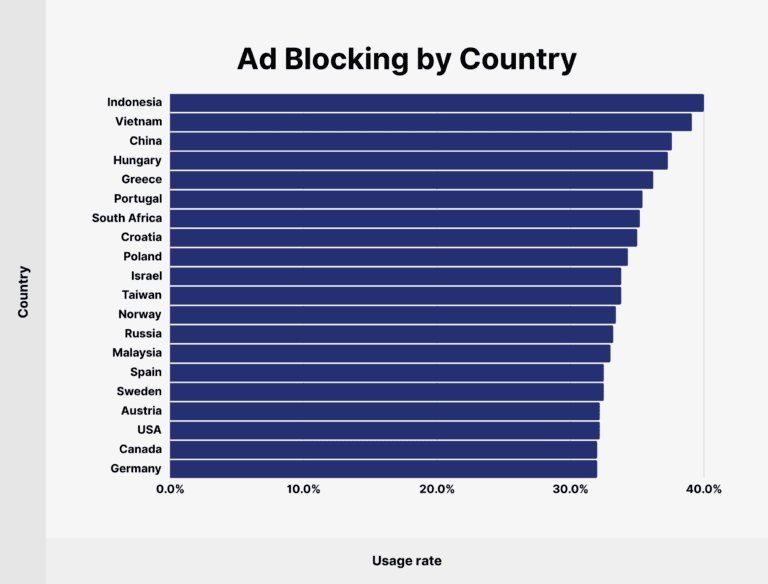
Effective ad formats that bypass AdBlock
Despite the power of adblockers, not all ad formats are equally vulnerable, even in a prominent niche like gambling. To avoid complex workarounds, focus on ad formats more likely to pass through ad-blocking filters.
Native Advertising & sponsored content
The essence of this approach is deeply integrating the advertising message into valuable content. This is the core of native advertising. Instead of flashy banners, focus on casino recommendations, bonus offers, or game reviews presented as a natural part of an article or list. For example:
- A detailed mention of a specific casino and its benefits within a game strategy guide.
- A “Top 5 Casinos with the Best Welcome Bonuses” list, where each casino is presented with a description and a link.
- A “How to Play Blackjack” guide with an emphasis on a casino that offers the best conditions for that game.
Direct Click Ads & Push notifications
These formats often bypass the classic banner networks that adblockers primarily target.
- Direct-click ads are simple text links (e.g., within a sentence: “Play at Vulkan Vegas with a bonus up to $1000”) or styled CTA buttons (“Get Bonus,” “Play Now”) that lead directly to the casino’s site or your affiliate link. They don’t load as separate ad elements and are less noticeable to AdBlock scripts.
- In-page and classic push notifications: The user subscribes to notifications from your site directly in their browser. Afterward, you can send them themed offers. These channels are entirely independent of ad-blocking algorithms.

Technical Solutions & Workarounds
Naturally, not all web admins will switch to new ad formats, so there are other technical ways to bypass ad blockers.
Anti-Adblock tools
This method is exclusively for website owners (publishers) who want to recover revenue from page ads. It involves specialized services (like Admiral or PageFair) that help you interact with users who have adblockers. The principle is simple: register on the platform and get a unique code snippet. You insert this code once into your site’s HTML template (usually before the closing </head> tag). After that, all configuration is done in the service’s web-based dashboard, where you can set up scenarios to be triggered upon anti-adblock detection.
The most common scenarios are:
- Polite notification: Display a non-intrusive pop-up asking the user to add your site to their “whitelist.”
- Offer an alternative: If you offer such services on site, suggest the user subscribe to push notifications or purchase a paid subscription for an ad-free experience.
- Restrict access: Hide some content or completely block access until the user disables their Adblock.
Bridge pages and pre-landers
Let’s see how this works for an affiliate running traffic from Facebook. The user is in the Facebook mobile app, where standard ad blockers don’t work, and sees your ad. They click it. This is where the bridge page comes in. Instead of the ad linking directly to the casino landing page, it leads to your intermediate page—a bridge or pre-lander. This page is hosted on your domain and looks neutral (e.g., “Confirm you are 18 or older,” “Loading your exclusive offer…”). It has no aggressive elements that moderators or adblockers could flag.
It’s important not to confuse this with cloaking.
- Cloaking is showing different content to bots and users at the same URL.
- A bridge page is a real page that all users see. It’s an additional, mandatory step in the sales funnel (Ad → Bridge → Offer).
After a few seconds, the bridge page automatically redirects the user to the final offer landing page. This is done by adding simple code to your bridge page. You don’t need to be a programmer; examples are easy to find online. The two most common methods are:
- JavaScript Redirect: A script that triggers the redirect after a set number of seconds (e.g., using the setTimeout function).
- HTML Meta Refresh Tag: A special tag in the page’s code instructs the browser to load a new address after N seconds.
Native ad networks
For website owners looking to diversify their monetization, native ad networks like MGID or Taboola offer a robust solution. By placing their content recommendation widgets on your site, you can display native ads that are less likely to be blocked, providing an additional revenue stream that is resilient to ad blockers. This is particularly useful if the network’s policies permit the promotion of gambling offers.

UX-focused strategies to reduce blocking
This advice is exclusively for content site owners (SEO affiliates, publishers). Why? Because you control the entire advertising ecosystem on your resource, from banner types to their placement and behavior. An affiliate buying traffic from social media cannot influence how “annoying” the platform itself is; their responsibility is the creative and the landing page.
While technical methods are effective, the best long-term strategy is to make the ads on your site so helpful and non-intrusive that users don’t feel the need to block them. This aligns with standards promoted by groups like the Coalition for Better Ads. Here’s how:
- Be non-intrusive and add value: Focus on the quality of your primary content. If users get real value from your site (honest reviews, exclusive bonuses), they’ll be more tolerant of ads. Avoid the most annoying formats: pop-ups, banners with sound, and ads that cover the content.
- Conduct regular A/B testing: Constantly test how different ad formats, sizes, and placements affect user behavior and your revenue. The goal is to find the right balance.
- Personalization and relevance: Try to show users ads that match their interests. A visitor reading about football betting is likelier to engage with a bookmaker’s banner than an online casino slots ad. Relevant advertising is perceived as helpful information, not a nuisance.
Conclusion
As we’ve seen, there’s no one-size-fits-all solution for surviving in the age of AdBlock. Success depends entirely on how you drive traffic and requires completely different approaches.
- For media buyers, the key to success is leveraging the near-total immunity of ads within mobile apps (Facebook, TikTok), focusing on this traffic, and using smart technical funnels with bridge pages.
- The strategy is different for website owners. Your task is to find a balance between monetization and user experience, using native ad formats and special scripts to politely engage with your audience using blockers.
Whichever path you choose, successfully testing these strategies requires a reliable partner with strong, flexible offers. Register with 888STARZ Partners. We provide our partners with top iGaming offers in over 100 GEOs, some of the best rates on the market, and all the necessary promotional materials for a smooth workflow. We will help you build an effective funnel and stay profitable despite ad blockers.
FAQ
Will native ads always bypass adblockers?
There are no guarantees, as adblockers are constantly evolving and learning to recognize ads better. However, native advertising, due to its deep integration with content, is and will remain one of the most resilient formats.
How to bypass AdBlock for website owners?
Website owners bypass Adblock by combining several approaches: they use technical scripts for dialogue with the user about whitelisting, replace standard banners with native advertising (links in text, reviews), and improve the user experience (UX) by making ads less intrusive.
Which ad format works best in GEOs with high adblock usage?
Of course, you first need to study the statistics on ad blocker usage by country and focus on the date. However, push notifications and direct-link advertising (text links/buttons) integrated into high-quality content tend to yield the best results. For media buyers, running ads within social media, messengers (Telegram, Whatsapp) traffic and mobile apps is the most effective strategy, as in-app environments are largely shielded from adblockers.




